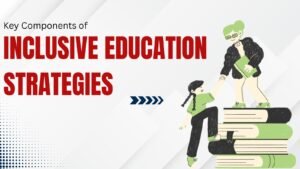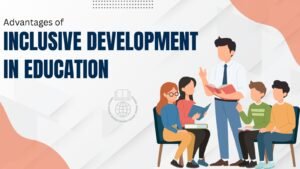Education should help every child grow. But in many places, only a few students get full support, while others are left behind. So, if we want real progress, we must look at how we include all children in schools. That’s why inclusive development strategies are needed. These strategies help schools become places where every child can learn, grow, and feel welcome. Also, they help break down barriers that stop children from getting equal chances. Because of that, schools become fair, friendly, and full of hope for all. In short, inclusive education is not just a new trend—it is the heart of a better future.
Why Inclusion Must Be Part of Education Reforms
Inclusion should not be left out when we talk about changing education. Because of that, here are some strong reasons why it must be included:
- Every child has a right to learn: if we want real change, then we must make sure all children get to learn equally. That’s the goal of equitable and inclusive education, which treats every child fairly.
- Diversity builds better learning: When students from different groups learn together, they also learn to respect each other. So, they grow with open minds and hearts.
- Left-out children fall behind: Many reforms focus on books and exams, but they forget children who need extra help. Because of that, the gap between students becomes bigger. But inclusive education helps close that gap.
- New ideas come from many voices: if schools include all children, then there are more ideas, more stories, and better results.
Also, when we include every child in our education plans, we make the world kinder, more equal, and smarter. So, inclusive development strategies are the real power behind better reforms.
Key Components of Inclusive Education Strategies
To make inclusion real in every classroom, we need strong steps. So, here are some main parts of a good strategy:

- Easy-to-use school buildings: Schools must have ramps, lifts, and proper toilets for all. If not, children with disabilities may not even come to class.
- Well-trained teachers: Teachers must know how to teach different types of learners. Because of that, they can make lessons better for every student.
- Extra learning support: Some children need help, like sign language, audiobooks, or writing tools. So, these tools must be part of the plan.
- Families and local groups must help: if parents and community members are part of the learning journey, then children feel more supported. Also, this helps schools understand real-life problems.
- Use of smart tools: With the help of educational technology, students can learn in fun, simple, and clear ways that suit their speed and style.
Because of that, all these parts make inclusive development strategies work better and help build strong learning systems.
Advantages of Inclusive Development in Education
There are many good results when we use inclusive development strategies in schools. So, let’s see how it helps:

- All students understand better: if teaching is done in many ways, then all children understand better. Also, learning becomes more fun for everyone.
- Students feel proud: When children are included and supported, they feel happy, safe, and strong. Because of that, they do well in school.
- Less bullying happens: If students respect each other’s differences, then there is less fighting and more kindness. So, the school becomes a peaceful place.
- Teachers also grow: when teachers learn to handle many needs, they also become smarter and better at their work.
- More students stay in school: If students feel like they belong, they won’t leave school early. Because of that, dropout rates come down.
In addition, when we plan for equitable and inclusive education, we also make education more loving and powerful.
Expert Opinion
Education experts agree that inclusive education is not a luxury—it’s a must. They stress that without inclusive development strategies, any reform remains incomplete. At Resilient Foundation, our workshops often highlight that digital tools and human understanding must work hand in hand for equitable and inclusive education to happen.
Future of Education with Inclusive Strategies
The future of education is bright if we keep working with care and smart ideas. So, let’s look at what lies ahead:
- Smarter tools for smarter learning: With digital innovation in education sector, we can now use online videos, reading tools, and games to help students learn in easy and fun ways.
- Flexible and friendly teaching: Teachers can now use new styles of learning by using educational technology. Because of that, students feel more active and happy during lessons.
- Better rules and support: If governments and groups work together, then more schools can get funds and plans for inclusive development strategies.
- The world is watching: more people now care about giving every child a chance. So, equitable and inclusive education is becoming a global goal.
- Teachers as Supporters: With Better Training and Support, Teachers Can Lead the Way. Because of that, classrooms will be stronger and more caring.
If we stay focused on inclusive education, then no child will be left behind. Additionally, we will build a future where every child has the opportunity to dream, learn, and shine.

